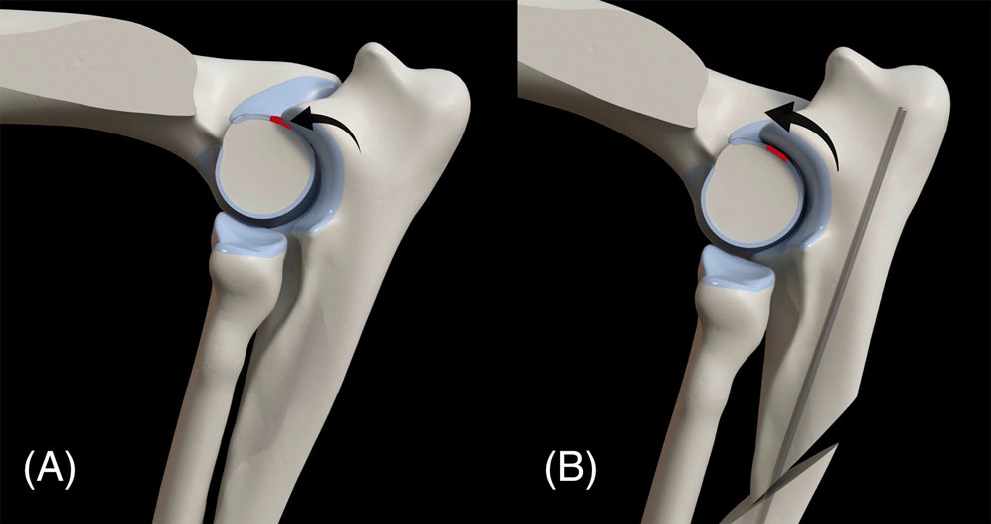7 Feb 2024
Alan Danielski, of The Ralph Veterinary Referral Centre, Marlow, investigated the effects of oblique proximal ulnar osteotomy on the healing of humeral intracondylar fissure in spaniels.

Medial view of elbows in a dog in the study.
An orthopaedic vet specialist has published research on a novel treatment method for the healing of humeral intracondylar fissure (HIF) in spaniels.
Alan Danielski, European and RCVS specialist in small animal surgery at The Ralph Veterinary Referral Centre, Marlow, investigated the effects of oblique proximal ulnar osteotomy (PUO).
The study aimed to introduce an innovative approach to heal the HIF that reduced the high complication rate that can be associated with transcondylar screws.
Research was based on 51 elbows in 25 spaniels, with a total of 24 partial and 27 complete HIFs diagnosed.
Objective assessment confirmed partial or complete fissure healing in 41 elbows (80.3%), leading to the conclusion PUO resulted in partial or complete healing of HIF and pain resolution in most dogs.
Dr Danielski said: “This manuscript represents the culmination of years of research and dedication. It has the potential to revolutionise the treatment of this devastating disease and prevent countless unnecessary amputations.
“PUO can also be considered as a revision strategy for dogs experiencing major complications after transcondylar screw placement.”

HIF, a recognised cause of thoracic limb lameness in spaniel dogs, can lead to fracture of the elbow, with latest thinking suggesting it is caused by joint incongruity.
In the first part of his study, Dr Danielski introduces a previously undocumented cartilaginous lesion, called a humero-anconeal lesion (HA lesion), in the caudal humeral condyle in elbows with HIF.
He used a modified medial arthroscope portal for better visualisation, and a focal cartilage lesion was consistently identified on the caudal aspect of the humeral condyle in dogs with HIF. The HA lesion showed various degrees of cartilage damage and the anneal process perfectly matched it, suggesting it could be the cause of the fissure.
The second part of the study focused on proving that healing the fissure could be achieved through performing oblique PUO, allowing proximal translation and tilting of the proximal ulna and displacing the tip of the anconeal process more proximally.
Traditional treatments with a transcondylar screw can lead to postoperative complication rates of 69%.
The technique in the study reduces the complication rate and led to healing of the fissure, with the findings – reported in the journal Veterinary Surgery – supporting viability of PUO as a promising HIF treatment.